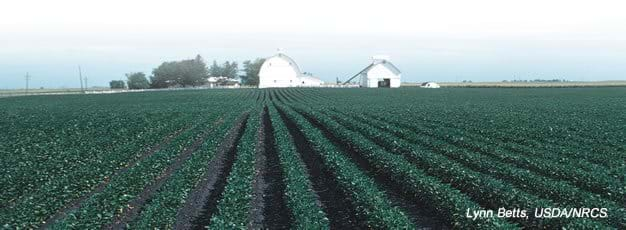Adoption of Genetically Engineered Crops Continues To Increase

Adoption of genetically engineered (GE) soybeans, cotton, and corn with herbicide tolerance (HT) and/or insect resistance (Bt) traits by U.S. farmers has been rapid over the 11-year period following commercial introduction. HT crops survive certain potent herbicides, enabling growers who adopt these varieties to control pervasive weeds more effectively. In the U.S., HT soybean adoption has expanded more rapidly and widely than other GE crops, reaching 89 percent of soybean acreage in 2006. The second most adopted variety, HT cotton, accounted for 65 percent of cotton acreage.
Bt crops contain a gene from the soil bacterium Bacillus thuringiensis that produces a protein toxic to specific insects. Bt seed use is concentrated in areas with high levels of infestations of targeted pests, so acreage shares for Bt corn and cotton are lower than for HT soybeans and cotton and vary widely across States. Bt cotton, which controls tobacco budworm, bollworm, and pink bollworm, was planted on 57 percent of U.S. cotton acreage in 2006—ranging from 17 percent in California to 83 percent in Louisiana. The U.S. acreage share of Bt corn leveled off during 1999-2002 because farmers with the greatest need to protect against the European corn borer had already adopted Bt corn. Adoption of Bt corn has since expanded, reaching 40 percent of corn acreage in 2006, following the introduction of a Bt variety to control corn rootworm.
According to ERS research, U.S. farmers are realizing tangible economic benefits from adopting these GE crops, such as higher yields, lower pesticide costs, and savings in management time. The impacts of GE crops vary with the crop, technology, pest infestation levels, and other factors.
In addition to corn, soybeans and cotton, U.S. farmers have adopted HT canola and virus-resistant papaya and squash. Moreover, other GE traits are in various stages of development. For example, USDA’s Animal and Plant Health Inspection Service has approved 1,256 field testing applications for crops with resistance to virus, 712 for resistance to fungus, 1,292 for improved agronomic properties (such as resistance to cold, drought, and salinity), and 2,687 for improved product quality (such as crops that increase protein and oil content, and crops with added vitamins and iron).
Worldwide, an estimated 220 million acres of biotech crops with HT and/or Bt traits were planted in 21 countries in 2005. The U.S. accounts for about 55 percent of this amount, and six countries combined (Argentina, Canada, Brazil, China, Paraguay, and India) account for nearly 43 percent.
Adoption of Genetically Engineered Crops in the United States, by Laura Dodson, USDA, Economic Research Service, October 2024
The First Decade of Genetically Engineered Crops in the United States, by Jorge Fernandez-Cornejo and Margriet Caswell, USDA, Economic Research Service, April 2006


